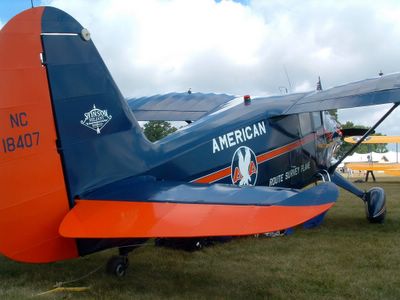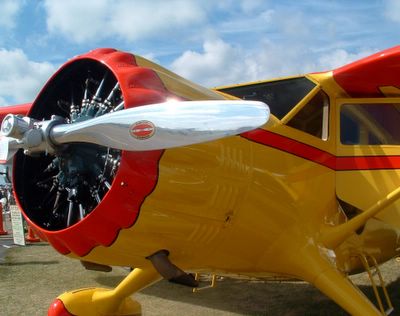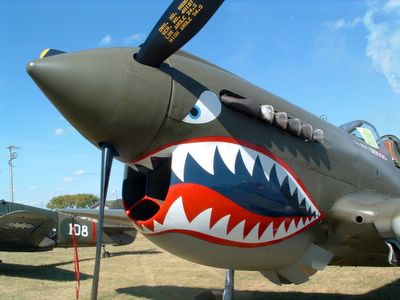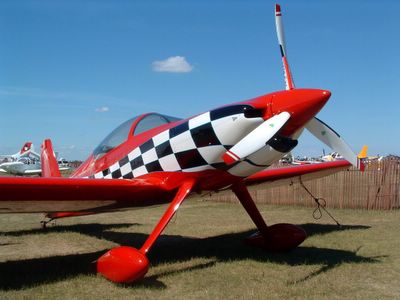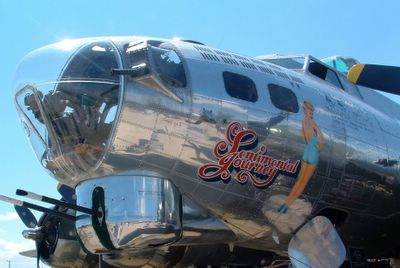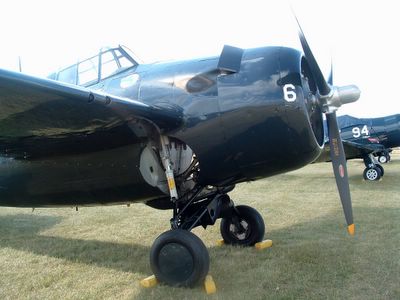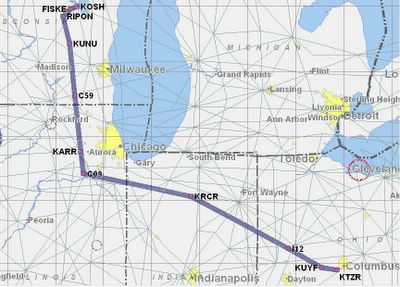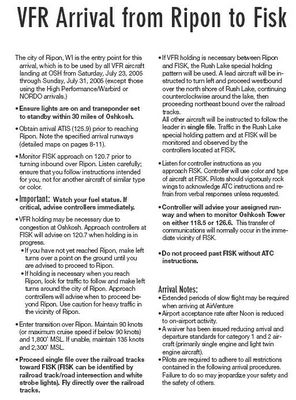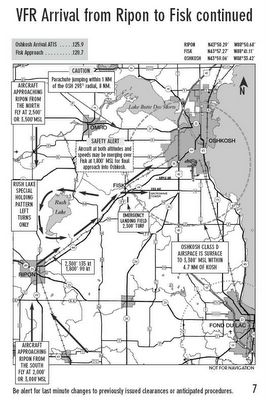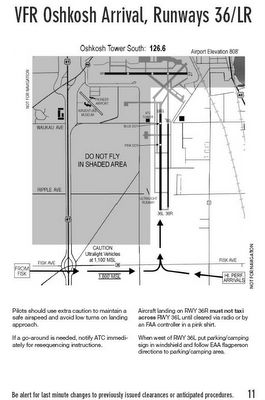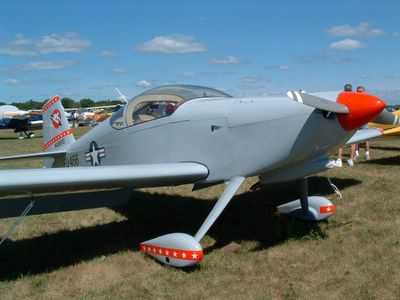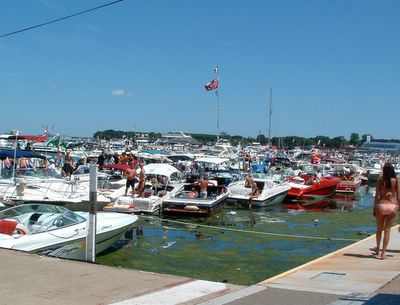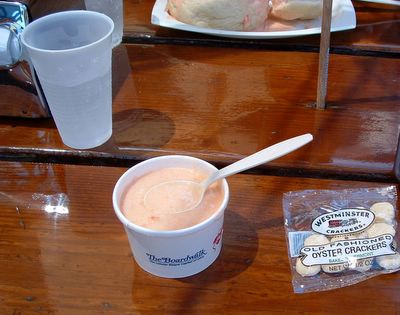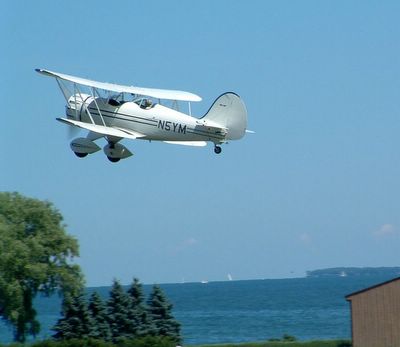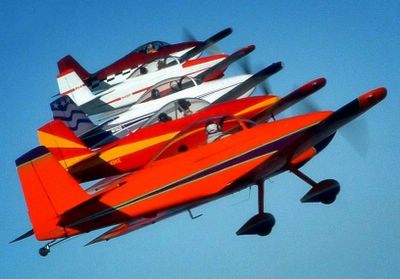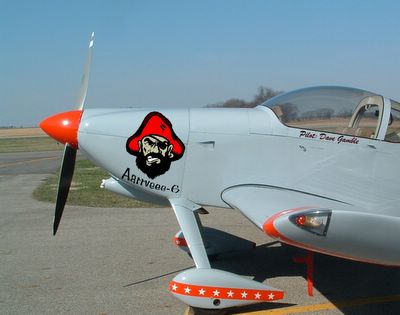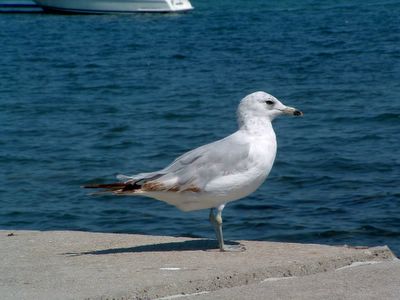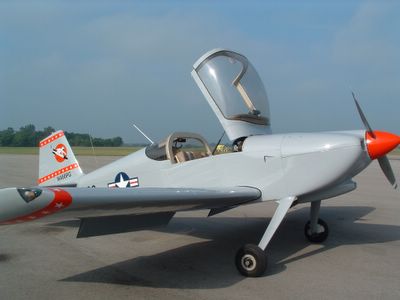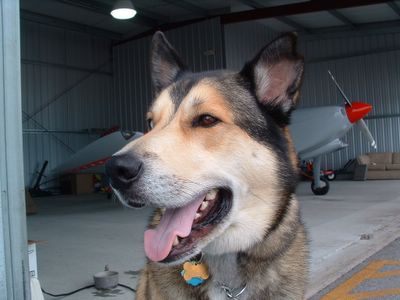I had gotten a weather briefing Friday, and had the little blue piece of paper to prove it. As I sat in line waiting for takeoff, I came upon another orange vested person holding up a sign saying "Show me your briefing." I proudly displayed my little blue briefing sheet, but for some reason received an emphatic shake of the head and a directive to pull out of line and shut down. All I could think of was that they change the color of the briefing sheet each day and they wanted me to have a briefing for Saturday.
I pulled out of line, shut down, and popped the canopy to see what I had done wrong. The controller came up and said he needed to give me the mandatory departure briefing. He had the departure instructions from the 35 page NOTAM that I had with me. I showed him that I had the page right there with me, and apologized for not understanding what we was asking me to show him. Fortunately, the engine started up again with no difficulty and I was allowed to pull back into line.

When you get to the runway, they position two planes for takeoff, one on the right, one on the left. I was on the left side, with an older Cessna on the right. He was cleared to take off, and a few moments later, so was I. The procedure is to get airborne, then make an immediate right turn out over the lake so as to stay clear of the planes departing from the cross runway. The Cessna, being heavier and slower, took a lot more runway to get off the ground and then made a somewhat leisurely turn to the southeast. I was rapidly catching up with him, and really didn't want to get stuck behind him, so I turned inside of him.
The rule is to stay at 500 feet above the ground for the first five miles. Once outside the five mile restriction I climbed on up to 4,500'. I headed back to my first checkpoint which on arrival had been my last checkpoint before Ripon. Since I had no ATC to listen to, I dialed in the frequency for the Ripon arrival to see how things were going. That early in the morning it was very calm. Mental note: if I ever go again, get to Ripon early!
I eventually climbed to 6,500' and set up for the long ride home. Since I knew there wouldn't be any delays getting back into Bolton, unlike the delay I knew to expect over Ripon, I was able to go without a fuel stop. Everything was going swimmingly until I picked up a weather report for Fort Wayne, Indiana. I had tried monitoring the Flight Service frequency to glean weather info on the way, but had mistakenly remembered the frequency as 122.2. It's actually 122.0. Doh! So, hearing nothing on what I thought was the FSS frequency, I started monitoring the automated weather observation frequencies at airports 30 miles ahead of me. I was flying in clear weather, so the reports of clear skies and lots of visibility were no surprise. But when I dialed up Fort Wayne and heard a report of 200' ceilings and 1/2 mile visibilty, I was a bit surprised.
Sure enough, as I got close to Indiana I saw a solid undercast. I have no problem flying over an undercast as long as I know it's clear on the other side, but I had no idea how far this stuff went. I tried to duck down underneath it, but it was too low. Again, figuring discretion to be the better part of valor, I turned around and landed at a small airport I had just passed. After fertilizing the side of the hangar, (restrooms were locked up) I got on the phone and called flight service and they told me Ohio was clear. As long as I was making phone calls, I called home to let them know that I was going to be a little later than I had predicted. They confirmed the report with a "weather out the window" report of clear skies.
Back in the saddle and a climb to 7,500' to get over the skud. That was working well until just before the Ohio border where I saw a single ridge of high clouds. It's hard to tell whether you're high enough to clear the clouds until you get right up to them. These looked like they were going to be pretty high, so again I decided to see if I could duck under them. I went down to 3,500, and it looked like I'd be able to get under, but I couldn't see how far the clear air went. I was afraid that I'd get down under there and eventually run into a wall of cloud/fog. I decided to climb back up and see if I could get over them. Here is the beauty of a strong airplane: since I get 1,200 feet per minute of climb (as compared to about 300 in the Tampico) it was easy to climb back up. At 9,500 I was just over the tops, so proceeded into Ohio. Once clear of the ridge, I could see that the clouds were broken up ahead of me and that there would be no problem getting back down through them.
Twenty miles out of Madison County (I wanted to fill up the tanks - I had been flying about 3 hours now and that leaves me with only 45 minutes worth of gas) I descended to 3,500. This was down in the hot, bumpy air which isn't nearly as nice as the cool, smooth air I had been flying in. I made an extremely bad landing at MadCo, and it was with quite a bit of relief that I climbed out of the plane. It took 27 gallons to fill the tanks, then it was a short hop back to Bolton.
I pushed Papa Golf back in the hangar, and headed home. I was too hot and tired to clean the bugs and such off the wings, so went back a few hours and a long, cool shower later to take care of that.
So, the first big adventure is over. Will I ever do it again? At this point, I'm not sure. I don't think I will go next year, (UPDATE: I did, but I hitched a ride in a car, and stayed in Green Bay in an air conditioned room) but I think I will eventually go again. When I do, though, I think I will fly into Fond du Lac and take the shuttle bus to the show. This will make the flying easier, and will make it easier to find an air conditioned motel room. The financial situation will be better by then since I will surely have sold the Tampico, so I won't have to restrict my lodging expense to a $20 a night dorm room. The dorm room wasn't bad this year since we really got lucky with the weather, but that was not the typical situation. It's far more common for it to be blistering hot, and that makes for very uncomfortable sleeping conditions. I'm of the age where I really like my comforts, and too lay awake in sweltering heat doesn't appeal to me at all anymore. Not that it ever did, to be honest, but I'm far less tolerant of discomfort than I used to be.
It always pays to remember that adventures usually come with a bit if discomfort, but they're usually worth it. This was certainly the case with Papa Golf's trip to Oshkosh this year. What an incredible, and highly memorable, experience!

